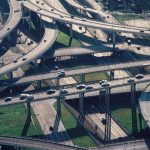Types of defects in timber
Types of Defects in timber are grouped into the following divisions.
1. DEFECTS DUE TO CONVERSION
During the process of converting timber to commercial form, the following defects may occur.
§ Chip mark: mark or sign placed by chip on finished surface of timber
§ Diagonal grain: Due to improper sawing of timber
§ Torn grain: Due to falling of tool small impression is formed
§ Wane: Presence of original rounded surface on the manufactured piece of timber
2. DEFECTS DUE TO FUNGI
The attack of timber by fungi when moisture content of timber is above 20% and presence of air and warmth for the growth of fungi the following defects are caused
§ Blue stain: Sap of wood is stained to bluish colour
§ Brown rot: Decay or disease of timber by removal of cellulose compounds from wood and wood assumes the brown colour
§ Dry rot: Convert the wood into dry powder form
§ Heart rot: This is formed when branch has come out of a tree and the tree becomes weak and gives out hallow sound when struck with a hammer
§ Sap stain: The sap wood looses its colour because of feed on cell contents of sap wood.
§ Wet rot: Caused chemical decomposition of wood of the timber and timber converts to greyish brown powder known as wet rot.
§ White rot: Attack lignin of wood and wood assumes the appearance of white mass.
3. DEFECTS DUE TO INSECTS
§ Beetles: Small insects form holes of size about 2mm diameter and attack sap wood of all species of hard woods. Tunnels are formed in all directions in sapwood by the larvae of these beetles and converted into fine flour like powder. They do not disturb outer cover and looks sound.
§ Marine borers: These make holes or bore tunnels in wood for taking shelter. The wood attacked by marine borers loses colour and strength
§ Termites: White ants are very fast in eating away the wood from the core of the cross section. They make tunnels inside in different directions and usually donot disturb the outer shell or cover
4. DEFECTS DUE TO NATURAL FORCES
The main natural forces responsible for causing defects in timber are abnormal growth and rapture of tissues
§ Burls: Irregular projections appear on the body of timber because of shock at younger age
§ Callus: Soft tissue or skin which covers the wound of tree.
§ Chemical stain: Discoloured due to the chemical action caused
§ Coarse grain: Annual rings are widened, tree grows rapidly hence timber possesses less strength
§ Dead wood: Timber obtained from dead standing tree
§ Druxiness: White decayed spots by fungi
§ Foxiness: Due to poor ventilation during storage or by commencement of decay due to over maturity indicated by red or yellow tinge in wood
§ Knots: Bases of branches or limbs which are broken or cut off from the tree as shown in the fig-1.
 Fig-1 Knot
Fig-1 Knot
§ Rind galls: Rind means bark and gall indicates abnormal growth and peculiar curved swellings found on the body of a tree.
§ Shakes: These are cracks which partly or completely separate the fibres of wood as shown in fig-2.

Fig-2 Different types of shakes
§ Twisted fibres/Wandering hearts: caused by twisting of young trees by fast blowing wind as shown in fig-3.

Fig-3 Twisted fibres
§ Upsets or ruptures: Indicate wood fibres which are injured by crushing or compression as shown in fig-4.



